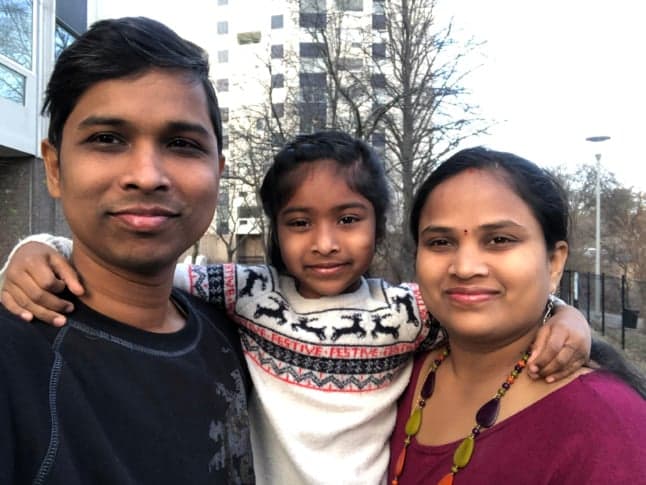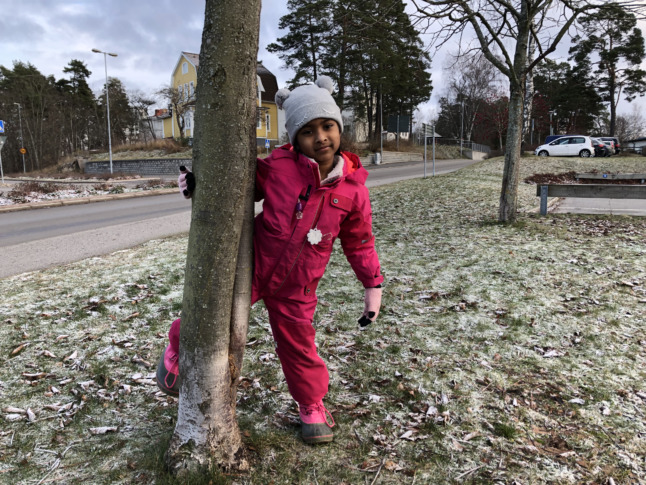A parent's guide: choosing a preschool or international school in Sweden
Moving to and settling into a new country is never easy. It’s daunting enough as a single person, or as a couple, but moving with children presents the unique challenge of finding a suitable preschool or international school.

How do you even begin this process? The Local, in partnership with the Futuraskolan International network of international preschools and schools in the greater Stockholm area, will help you solve this puzzle.
Learn the basics
Where do you begin? Research, research and then a little more research. IT developer Pavan Koralla, originally from India, took a methodical approach to finding a preschool for his daughter, Maithili.
“I used the government Skolverket website [page in English] at first to find out what a pre-school (förskola) was, how they were organised, what age children could start, everything," Pavan says. "It’s a mine of good information. The Skolverket page on pre-schools is very good – I recommend it."
Next, he used his municipality’s preschool page to find the locations of the local preschools. "The page also offered comparisons on the municipality’s preschools, based on marks given by parents on a number of parameters such as, ‘are you satisfied with the school?’, ‘does it feel like a safe environment for the child?’, ‘what is the teacher-pupil ratio?’ and so on.”
Sophia Fromell, a Greek woman who moved to Stockholm from the US with her family in 2020, says early preparation was also crucial when it came to choosing an international school for her children, Yasmin, seven, and Axel, ten.
“You cannot leave it to the last minute – you need to plan ahead,” Sophia says. “Especially if, like us, you want your child to go to an international school. There are a finite number of such schools.
"You cannot just show up and knock on the door and apply. There will be queues. I was a member of the Americans in Stockholm Facebook group before we moved from the US, which was very helpful and then we moved on to the Stockholm municipality schools page, which was in English and very useful.”
 Sophia Fromell with her husband and children. Photo: Supplied
Sophia Fromell with her husband and children. Photo: SuppliedAsk yourself what matters most: curriculum, language, personal development?
Sophia and her husband, Otto, knew they wanted an international school in central Stockholm but also had some other requirements. They wanted a curriculum that "allows the kids to transition to other countries because we're in banking, so we move around a lot". Sophia adds: "We also wanted a curriculum that focuses on the child and offers outside-the-box education, as well as a chance to be educated in English – despite having a Swedish father, my kids don’t have much Swedish.”
All these requirements are met at Futuraskolan, which uses Fieldwork Education's teaching programmes: the International Early Years Curriculum (IEYC), the International Primary Curriculum (IPC) and the International Middle Years Curriculum (IMYC). Central to each is the development of knowledge, skills and understanding, with a focus on preparing the students for lifelong learning.
Pavan, who arrived in Stockholm in 2013, also had a very clear vision of what would be best for his daughter. His research gave him confidence that he could find just what he and his wife Akhila wanted at one of Futuraskolan's seven preschools.
“We wanted a preschool that really engaged with children, that supported their development," he says. "It should be about their growth. It’s not about maths and science in preschool."
His priority was a preschool to help his daughter develop socially and make friends, as well as improving her "motor skills, so she can do exercises, climb things or do yoga", and enhancing "her cognitive development, so she’s able to solve puzzles.”
Top tips for international parents
Do Pavan and Sophia have any other top tips for parents who are new to Sweden (or about to move) and are looking for preschools or international schools?
“Parents should try to visit the preschools they’re interested in – it’s the only way to really gauge what the institution is offering," Pavan says. "For instance, when we visited we found out that the Futuraskolan International preschool ran drama and music classes each week, which was a big tick in its favour.”
Sophia, head of risk at a financial institution, suggests considering the overall level of diversity at a school. "A diverse school is easier for the kids to adapt to and, with families from a variety of backgrounds, it’s easier for parents to make friends. When parents make friends, it makes for a happier family. That's definitely my top tip.”
A progressive choice
An international education for his daughter was vitally important to Pavan and it was for this reason that he finally chose Futuraskolan International Danderyd. He's delighted with the decision.
"If children become aware of other countries at an early age, make friends with kids from other countries and know about the wider world, that can only be beneficial," he says. "My daughter already knows that there are many other countries, many other languages, and many other cultures – and she now has friends from China, Sri Lanka and the Middle East.”
 Pavan's daughter Maithili in Stockholm. Photo: Supplied
Pavan's daughter Maithili in Stockholm. Photo: SuppliedHe's also very complimentary about how the preschool is helping his daughter develop. “The constant attention and care has been excellent," he adds. "When she first started we had feedback sessions once a term – very thorough discussions with teachers about how Maithili was progressing. And then when she was a little older, they continually assessed language skills, motor skills and so on. So we always knew when she needed a little help with something.”
Sophia eventually decided on Futuraskolan International School of Stockholm and is also thrilled with her choice. In addition to the IPC and IMYC, this school offers a Grade 9 curriculum focused on preparing students for an International Baccalaureate Diploma Programme.
“The school values individuality and collaboration," says Sophia. "Axel needs a very special approach compared to most other kids and they give him that. The teachers at Futuraskolan don't see children who are different from the norm as problems, as was my experience in the US. The child is an individual and just needs to be taught a little differently. When the school has such a good pupil-teacher ratio, then it’s easier to give children individual attention as they do at Futuraskolan.”
Futuraskolan’s focus on personal development has also impressed Sophia. “My kids both recently had a class called ‘Little Entrepreneurs’. They learned how to set up a business, how to create their tagline and their logo, and how to pitch their product. They came home and tried to convince me to buy a Barbie doll or a T-shirt. I went to college to learn those things and they're learning them at ages seven and ten – it’s incredible!”
This content was paid for by an advertiser and produced by The Local's Creative Studio.

Join the conversation in our comments section below. Share your own views and experience and if you have a question or suggestion for our journalists then email us at [email protected].
Please keep comments civil, constructive and on topic – and make sure to read our terms of use before getting involved.
Please log in here to leave a comment.